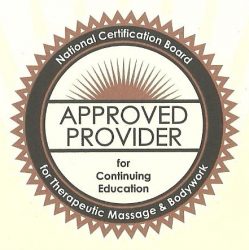I was invited to Seattle by Dr. Ravensara Travillian to speak at a fund-raising dinner this past Monday night, to kick off her efforts to get a university-level certificate massage program started. Dr. Christopher Moyer was the other invited speaker, so I felt like I was, as we say in the South, “in high cotton.” I had a great time visiting with Ravensara and her husband Iain, and Christopher.
Most of our visit was spent discussing the project. Raven invited me on the basis of my knowledge of regulation and legislation, of what our massage organizations are up to, and the state of massage therapy education in the US. Prior to my going out there, I contacted some of our leaders to make sure I had up-to-date information on what’s going on with them. In fact, this week the Coalition (previously referred to as the Leadership Summit) is taking place in Florida…the CEOs/EDs and Chairs of the Boards of ABMP, AFMTE, AMTA, COMTA, FSMTB, NCBTMB, and the MTF are coming together to discuss the state of the union, so to speak.
I truly enjoyed seeing old friends and meeting some new ones that I had previously only met on FB, and some I didn’t know at all. I appreciate the fact that they came to hear more about this initiative. Good conversation was stimulated, good questions were asked. The speakers were videoed and that will be released in a day or two, so I’m not going to rehash everything that happened there; I’ll share the video when it comes out.
I particularly appreciated the presence of Bodhi Haraldsson, who is the Research Director at the Massage Therapists Association of British Columbia. Bodhi was appalled at my report on the financial status of MTs in the US, provided to me in the form of the Annual Report from the FSMTB. Their information was obtained by a survey of MTs in the member states, and compiled from surveys that were sent out by the AMTA and ABMP to their members, and the NCBTMB to their certificants. All in all, about 200,000 MTs were surveyed. The piece of news that shocked Bodhi was that 61% of MTs in the US say that they cannot support themselves/their families with their income from massage. Only 2% of therapists surveyed stated that they make over $70,000. According to Bodhi, the five busiest therapists in his own clinic make more than that. Personally, I think that’s a direct reflection of the high standards of education and the devotion to research practiced by our neighbors in BC.
Ravensara’s plan to take massage education up another notch has been criticized by people who don’t understand what it’s about. No one is going to be forced into getting higher education. Since I said this was the report on Seattle and a little bit more, I’m going to seize the moment to repeat a little of what I said there and go a little in depth about the environment of massage. There seems to be a lot of confusion about many different things that are currently on the horizon. One of them is the Affordable Care Act, which contains the stipulation allowing massage therapists to direct bill insurance as long as they are licensed as health care providers in their state. I see the comments all the time that “I don’t want the government telling me what to do.” “I don’t want to get bogged down by the insurance companies.” The ACA does not mandate that anyone has to file insurance. If you want to run a cash practice, you can carry on as usual. Those who don’t want to participate in insurance billing should not interfere with those of us who do.
Another thing that seems to be confusing people is the ELAP (Entry Leval Analysis Project). As I have stated on my blog on several occasions, I had issues with the way that project was rolled out and the way it was presented. However, I do think it will turn out to provide valuable information, and we’ll all know on December 16, which Anne Williams of ABMP informed me will be the unveiling of the 776-page document.
I have seen school owners stating that they didn’t want more regulations telling them what to do and how to run their school. Again, this seems to be a point of confusion. The ELAP is a research project. Period. It is not regulatory in any way. No one will be forced to adopt whatever policy recommendations might come out of it, because they will be just that–recommendations.
AMTA, ABMP, and the AFMTE all have benefits and annual conferences for educators. They have projects going on to educate teachers in research literacy, as does the MTF. AMTA has teacher-track classes and research-track classes at the annual convention. ABMP has an upcoming class in teaching the teachers to write core curriculum. None of these organizations are regulatory. They can show you how to write your core curriculum, suggest what should be included in it, and show you how to teach research literacy. They can’t make you do it, or make you do it their way.
COMTA, which is a strictly voluntary accreditation body and the only one that was founded for the specific purpose of accrediting massage therapy, although they have now also taken in aesthetic accreditation, spells out standards for excellence in education. I hear from school owners that they don’t seek the accreditation because they don’t want anyone telling them how to run their school. The Standards are on COMTA’s website for anyone to see, and I think it would behoove any school owner to do their self-study report to see how you stack up. COMTA does not limit what you can teach to evidence-based modalities, which personally I find unfortunate, but if you’re using that for the argument against it, you’re wrong. If you are teaching belief-based energy work at your school, you’re free to carry on. They want to insure that you are teaching what you say you are teaching and that you are including the subject matter that matters to massage. They spell out standards for good record-keeping, good financial practices, insuring that teachers are competent to teach their subject matter, having and abiding by policies and procedures, and other such things, and they ask you to document it in writing. COMTA is not a regulatory organization. There are other accreditation bodies out there that take in massage therapy, among other things, and they are not regulatory, either. It’s a voluntary process that allows you to say “Here are the standards we have chosen to meet.”
Even the Federation of State Massage Therapy Boards is not regulatory, in and of itself. They are an association of the boards in regulated states. They are soon to unveil a Model Practice Act that they have worked on for the past few years, and they would like for the states to adopt. Notice I said “they would like for the states to adopt.” The purpose of that is to make practice acts uniform and facilitate reciprocity. It could require legislative changes in every state that already has a practice act, should the member states chose to adopt it. I don’t look for that to completely happen in my lifetime. I do imagine it will be discussed this week by the Coalition, along with the ELAP and other issues they are considering.
A couple of months ago, I sent the leaders of all the organizations my blog urging them to pool resources to get the NCBTMB written out of the statutes in every state. I am hopeful that topic will be discussed as well. The NCBTMB is not a regulatory organization–but their exams are written into the statutes in many states. That represents an improper delegation of authority; there is no government oversight and no public accountability there. This is not a vendetta against the NCBTMB; it is an attempt to rectify something that has been wrong all along.
Now I’m down to the function of state boards. I constantly get complaints from people about how long it is taking them to get their exam scores or get their license. There is no true reciprocity in the United States. The fact that you have a license in one state does not include any kind of guarantee that you’ll get one in a different state, regardless of how long you may have been practicing. Most state boards have it stated on their websites that processing out of state requests takes longer. My own experience in serving our state board for five years was that many times, a license is held up because the applicant failed to provide a piece of documentation. Sometimes, the holdup is that they have to check out your transcript to make sure your education in the state your are coming from stacks up to the education required in the state you are moving to. If it doesn’t, you can be denied a license. If you are lacking the documentation, you can be denied a license. They cannot take anyone’s word for it that “I have this, I have that.” If you don’t have the required paper trail of evidence, you’re not going to get it, period.
State boards are the ONLY regulating bodies in massage. They are the ONLY ones who can tell us what to do. The other organizations can suggest. The other organizations can lobby legislators to get laws passed or changed–and state boards can’t. State boards exist for one purpose: public protection. They are not here to serve the interests of massage therapists. They are not here to cater to us or to cater to schools. They exist to license therapists, to spell out the requirements for getting a license, to spell out what they expect from schools, and to deal with complaints from consumers.
I hope that clears up a few things for people. I see misinformation spread around on social media all the time, and all that does is perpetuate misinformation. If you are a massage therapist, you are obligated to know the law in your state. If you are planning to move somewhere, you need to learn the law in that state, prior to packing up and going there. I’ll go further and say that a board member recently said to me “I don’t know the bylaws and rules the way you do.” If you’re going to serve a board, then it’s your business to know them up one side and down the other. Ignorance is not bliss and it’s not an excuse, either. You can’t uphold the rules if you don’t know what they are. The burden is on you.


